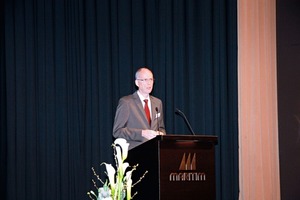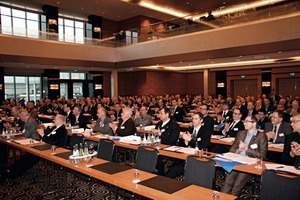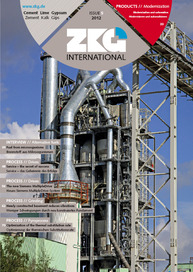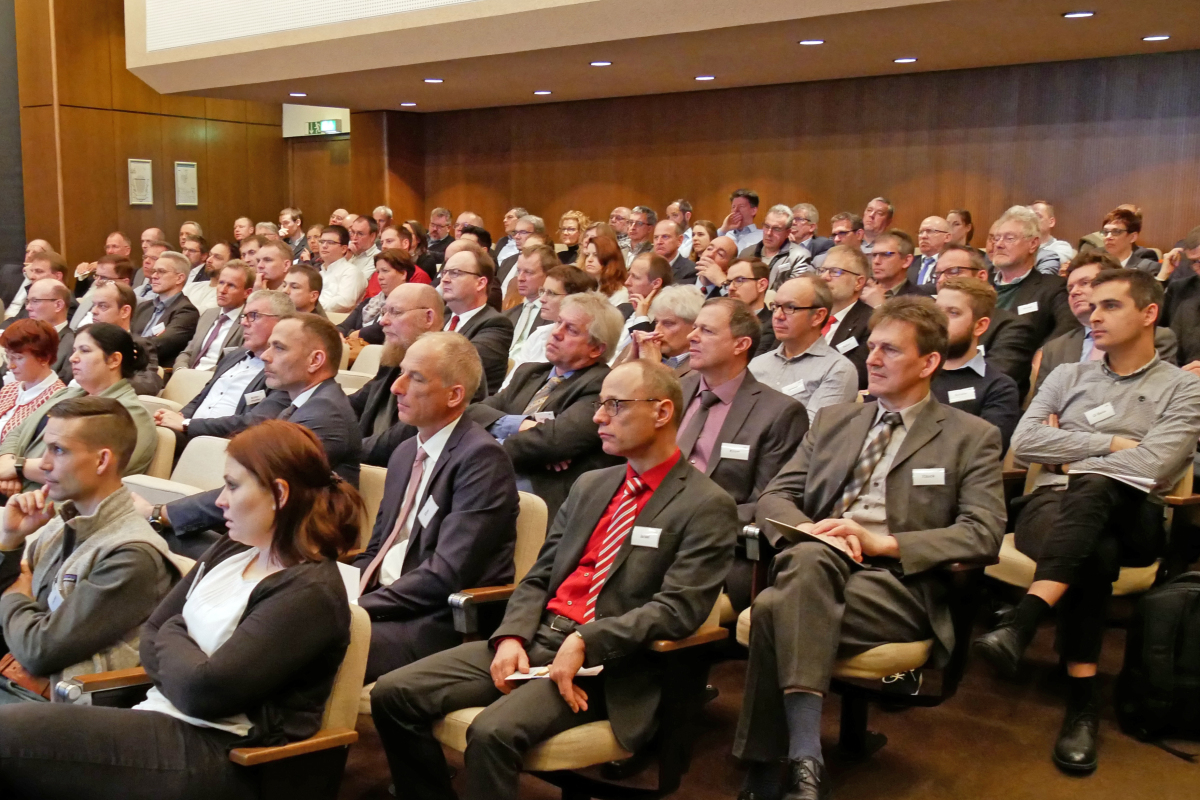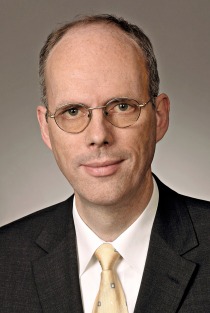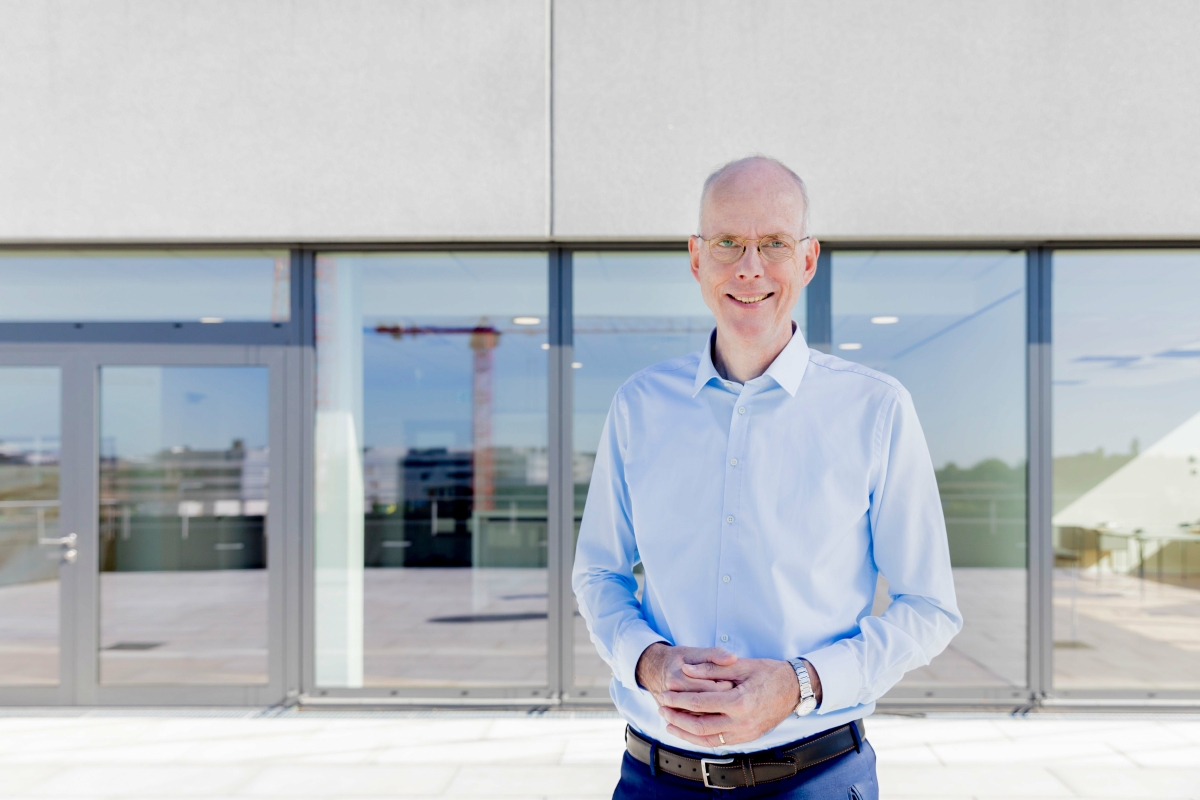Cement Process Engineering
The day‘s first contribution came from Dipl.-Ing. Klaus Bauer, of Schwenk Zement KG, who ascertained, inter alia, that the cement industry, in important partnership with the disposal industry, has now optimised and perfected its recycling chain. Dipl.-Ing. Wolfgang Schwarzer, of Dyckerhoff AG, then explained the practical benefits of simultaneous grinding and drying of shredder fluff in an air vortex mill for processing of substitute fuels with fluctuating moisture contents. He was followed by Dipl.-Ing. Burkhard Wolf, of Holcim (Deutschland) AG, speaking on the topic of “Energy-efficient conversion of kiln-gas dedusting at Holcim (Deutschland) AG‘s Lägerdorf cement plant – experience gained from installation and operation”. As he noted, all the hopes placed in the project have been totally fulfilled: 10 m filter bags have proven their capabilities, and there have been no observable negative effects of bag length on the cleaning performance. 12 m (14 m) long filter bags now appear to be possible for the future, with low-pressure and “off-line” cleaning of fabric filters (LP-LV and EMC technology).
“Renewal of clinker production facilities at the cement plant of the Leube GmbH in St. Leonhard/Austria” was then the topic examined by Dr. Günter Waldl, of Zementwerk Leube GmbH. This modernisation project has been successfully completed in an extremely short period, despite considerable space difficulties.
Dr.-Ing. Martin Oerter, of FIZ GmbH, Düsseldorf, then focused on the subject of “Current developments in environmental law – possible implications for the use of secondary fuels”. The “waste-management hierarchy” scenario currently probable is as follows: avoidance, re-use, materials-route recycling, thermal-route recycling, environmentally friendly disposal. The cement industry enjoys in this context the unique distinction vis-à-vis other recyclers that feed materials can be routed simultaneously for materials-route and energy-route utilisation.
“Oxyfuel – future technology for reduction of CO2 in the cement industry” was the topic examined by Dipl.-Ing. Kristina Koring, of VDZ Düsseldorf. Oxyfuel is currently one of the focal technologies in the context of “CCS” (Carbon Capture and Sequestration). On the basis of present-day technological standards, oxyfuel is the best method for CCS, is technically feasible, and can be retrofitted into existing facilities; However, its use would currently increase production costs by around 40 %. The first commercial applications are therefore unlikely before 2030.
Dipl.-Ing. Philipp Fleiger, of VDZ Düsseldorf, focused on “Optimisation of the charge: a look into the interior of the ball mill”. As he stated, experiments and numerical solutions based on the “Discrete Element Method” (DEM) or on “Molecular Dynamics” (MD) permit insights into the influences exerted on the grinding plant by various charge compositions, thus allowing improved understanding, and therefore optimisation, of the grinding process.
Dr. Markus Pohl, of Dyckerhoff AG, then spoke on “Operational experience with vertical roller mills for grinding of GGBFS and composite cements”. A broad range of optimisation provisions makes it possible to assure high grinding mill availability; these include ramped acceleration (during the start-up phase), decoupling from the rotary kiln, optimised minimum water demand, the position and inclination of the master rollers, preparation of the product bed and expert systems (currently under development). The vertical mill is significantly superior to traditional grinding processes from an energy viewpoint, by a factor of no less than 1.7 to 2 for cement, and of 1.5 to 2 in the case of ground granulated blast furnace slag (GGBFS). Grinding aids improve the grading process, can additionally boost system throughput, and also generate benefits for process stability.
In his paper on “Fifty years of occupational health and safety: a retrospective”, Dipl.-Ing. Matthias Trauth, of HeidelbergCement AG, illustrated how industrial and occupational safety provisions have, in the course of time, made it increasingly possible to reduce accidents to employees. He emphasised again that occupational health and safety is, above all, a management task. The day closed with a paper by Dipl.-Ing. Stephan Schenk, of Lafarge Zement Wössingen GmbH, on “Servicing and maintenance now: Planning and implementation using modern IT tools”, in which he showed how modern computer software can make servicing and maintenance activities more (cost) efficient.
In his closing address, Dr. Martin Schneider of VDZ, again drew attention to the Cement Annual Conference, taking place from September 27 to 28, 2012. The focus here will be on both energy and industrial policy matters, and on up-to-date cement and concrete technology topics.
www.zementtagung.de

